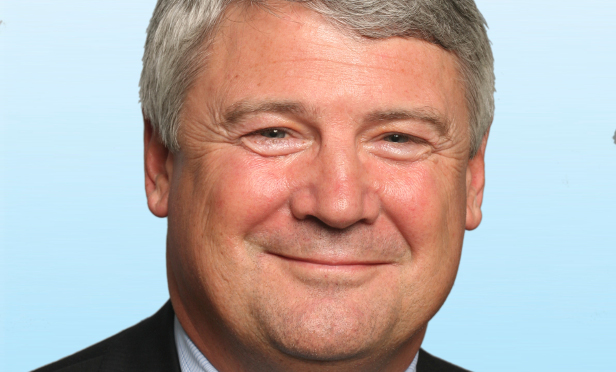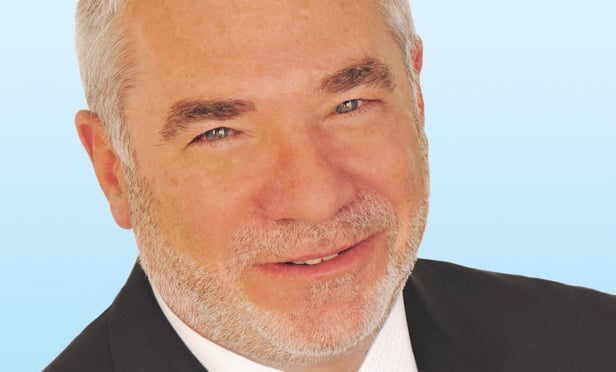 Latham: “Some things happened last year that started to create uncertainty in the minds of investors, and as a result people started to tap the breaks and be a little more cautious.”
Latham: “Some things happened last year that started to create uncertainty in the minds of investors, and as a result people started to tap the breaks and be a little more cautious.”
NEW YORK—Tenant improvement (TI) allowances and free rent are up nationwide and growing at a more rapid pace, and there’s been a significant slowdown in velocity despite ample capital in the market, Scott Latham, vice chairman and co-lead for Colliers International’s New York capital markets and investment services, and Andrew Nelson, the firm’s chief economist, tell GlobeSt.com. As 2017 draws to a close, we spoke with Latham and Nelson about current CRE investment trends, both on a national and global level, and the role of rising interest rates in investor strategy for 2018.
One overarching trend Latham notes is the increasing cost of attracting and retaining tenants. “Tenant improvement allowances and free rent are up about 70% in midtown Manhattan over the last five years, which equates to $65 per square foot in TI allowances and eight months of free rents,” he says. While those are approximations and each transaction is different, it is getting more expensive for landlords to both attract tenants seeking space and retain the tenants they already have.
From an investment-sales perspective, there has been a real slowdown in transaction velocity, according to Latham. Year-over-year, high-level activity is down 50% in Manhattan and about 19% nationally. “It’s not that there’s any shortage of capital, but there simply hasn’t been a lot of trading activity this year,” he says. In Manhattan, this trend is particularly pronounced because of $160 billion of Manhattan real estate has sold since 2014.
But that’s not the only reason for the slowdown, says Latham. “Some things happened last year that started to create uncertainty in the minds of investors, and as a result investors started to be more cautious and be a little more cautious.” The first factor was Brexit, and uncertainty over how it would impact the European markets and what it would do to the markets in general. This created a situation where transactional activity slowed in Europe and in the US. Second, the US elections produced uncertainty on the part of real estate owners and investors. That uncertainty has continued because of proposed tax cuts. “They don’t want to transact now if taxes are going to be reduced shortly.”
 Nelson: “Globally, the big news of the summer was China’s announcement that offshore investment will receive greater scrutiny from Beijing, likely reducing direct acquisitions from Chinese entities, particularly for big-dollar properties.”
Nelson: “Globally, the big news of the summer was China’s announcement that offshore investment will receive greater scrutiny from Beijing, likely reducing direct acquisitions from Chinese entities, particularly for big-dollar properties.”
The third factor influencing the Manhattan marketplace, in particular, is cap rates, which have started to plateau after a number of years of cap rate compression. “We’ve seen cap rates begin to stabilize, which is not terribly surprising in a mature part of the market cycle,” says Latham. “People stop underwriting growth as they do in the early part of a cycle.”
While property transaction volumes are continuing to trend down, price appreciation is generally remaining moderate, says Nelson. “This is consistent with our conclusion that we are nearing the end of this real estate market’s cycle.”
As a whole, the US economy is still viewed as strong and stable, Nelson says, which—combined with ultra-low interest rates—makes US commercial real estate an appealing investment, notwithstanding the Fed’s continued slow push to higher interest rates.
There is at least one caveat to this rosy picture, however. “Globally, the big news of the summer was China’s announcement that offshore investment will receive greater scrutiny from Beijing, likely reducing direct acquisitions from Chinese entities, particularly for big-dollar properties,” says Nelson. But, he adds, impacts from any Chinese pullback are likely to be relatively limited and focused on a few key markets.
As foreign investors go, Latham says that in 2016, two of the top 10 most active participants in the entire US sales market were Chinese and one was Canadian, and those three accounted for about 15% of the activity. In the US market this year, there were no Chinese investors in the list of top 10 most-active investors in the market from a dollar perspective. However, there were three foreign buyers in the top 10 this year: the government of Singapore, Case (a Canadian company, and historically Canada has been the steadiest foreign capital provider to the US market) and APG Dutch, a pension fund. Those three foreign buyers account for about 34% of the market activity.
“We continue to see a large influx of foreign capital in spite of the fact that Chinese capital for the last half of 2017 has been largely absent due to the Chinese government’s focus on capital controls,” says Latham. There has been a lot of foreign activity—this market cycle we have a seen true globalization of the real estate industry—and investors are more comfortable now scouring various markets around the world as they make their investment decisions while factoring in stability, rule of law and other factors as they attempt to balance risk with reward.
For both foreign and domestic investors, interest rates are playing a role in their strategies, but not an outsized role. Latham says there is an overwhelming sentiment that the rise in interest rates will be slow and moderated by future growth. “Rising interest rates mean we’re in a growing economy,” he says. “This translates to tenants feeling good about the way things are going. ” He says when tenants feel this way, they tend to grow and expand, which are good things for the real estate sector.
Of course, a rise in interest rates could slightly lower returns, but investors tend to “price in” those interest rates, and higher rates point to a stronger dollar, which bodes well for foreign investors who hedge against it or rise against their own currencies, says Latham.
Another factor related to the rising interest rate environment is the refinancing risk for those who have loans coming due. This remains in the borrowers’ favor. “Most real estate deals are either five-year or 10-year money,” says Latham. “Interest rates are now 75 bps less than five years ago and 275 bps less than 10 years ago, and values have appreciated.”
On balance, the market is very healthy and has done a very good job of maintaining some serious discipline this time around that will prevent the type of correction we saw in the last cycle, where things were out of control, says Latham. “There’s modest leverage, a strengthening economy and currency that will strengthen as rates tick up a bit. Smooth sailing for at least some period of time is expected as the economy continues to improve in the US.”

















 Copyright © 2024 ALM Global, LLC. All Rights Reserved.
Copyright © 2024 ALM Global, LLC. All Rights Reserved.